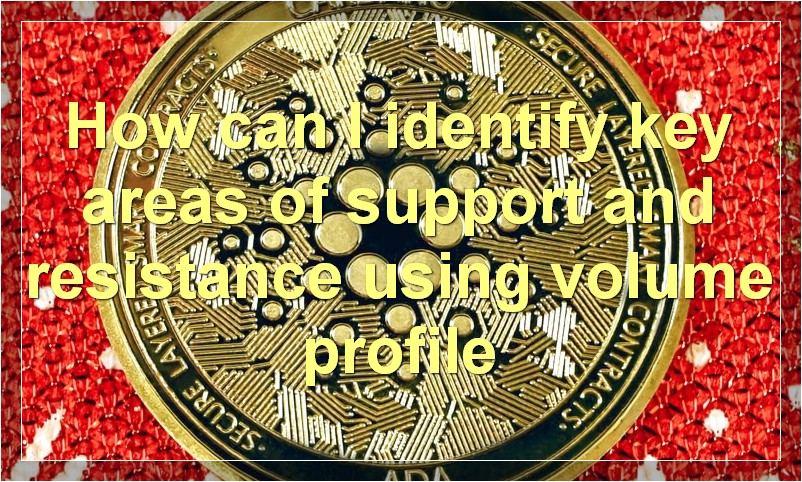There are many different ways to trade the markets, but two of the most popular methods are volume profile trading and traditional trading. So, which is better?
What is the difference between volume profile trading and traditional trading
In traditional trading, traders make decisions based on their own analysis of the market. They might use technical indicators or fundamental analysis, or a combination of both, to try to predict which way the market will move.
Volume profile trading is a different approach. Traders who use volume profile focus on the volume of traded contracts at different prices, rather than trying to predict market direction. They believe that the volume of contracts traded at a certain price can give clues about future market direction.
For example, if there is high volume of contracts traded at a certain price level, that price level is likely to act as support or resistance in the future. If there is low volume at a certain price level, that price is less likely to be important in the future.
Some traders use volume profile alone to make trading decisions, while others use it in combination with other technical indicators or fundamental analysis.
What are the benefits of volume profile trading

When it comes to trading, the volume profile is one of the most important tools that you can use. The volume profile is a tool that allows you to see the amount of trading activity that has occurred at different prices throughout the day. This information can be extremely helpful in making trading decisions.
There are a number of benefits that you can enjoy by using the volume profile when trading. One of the biggest benefits is that you can get a better idea of where the market is going. The volume profile can help you to see where there is a lot of buying or selling activity taking place. This can give you an indication of where the market is headed.
Another benefit of using the volume profile is that you can get a better idea of what prices are most important to the market. By seeing where the majority of trading activity is taking place, you can get a better idea of which prices are most important to the market. This information can be extremely helpful when it comes to making trading decisions.
Finally, the volume profile can also help you to see how strong or weak the market is. If there is a lot of buying activity taking place, it can indicate that the market is strong. On the other hand, if there is a lot of selling activity taking place, it can indicate that the market is weak. This information can be extremely helpful in making trading decisions.
How does volume profile trading work
In order to understand how volume profile trading works, one must first understand what a volume profile is. A volume profile is simply a graphical representation of the quantity of shares that have been traded at different prices over a given period of time. The vertical axis of the volume profile represents the quantity of shares traded, while the horizontal axis represents the price.
The volume profile can be used to identify areas of support and resistance, as well as potential trading opportunities. For example, if the volume profile shows that a large number of shares have been traded at a particular price level, this price level may be considered a area of support or resistance. Likewise, if the volume profile shows that a small number of shares have been traded at a particular price level, this price level may be considered a potential trading opportunity.
There are a variety of different ways that traders can use the volume profile to their advantage. Some traders may use the volume profile to simply identify areas of support and resistance, while others may use it to identify potential trading opportunities. Still others may use the volume profile to help them set their stop-loss and take-profit levels.
What is the importance of volume in volume profile trading
Volume is one of the most important aspects of trading, and this is especially true when it comes to volume profile trading. When you trade using volume profile, you are using a tool that takes into account the amount of volume traded at different prices in order to make better decisions about where to enter and exit trades.
Many traders believe that volume is the most important factor in determining the strength of a market move. When there is high volume, it means that there are more buyers and sellers involved in the market, which can lead to more volatile price action. It also means that there is more liquidity in the market, which can make it easier to get in and out of trades.
Volume profile trading can be a very effective way to trade the markets, and it is something that all serious traders should consider incorporating into their own trading strategies. If you are not currently using volume profile data in your trading, then you may be missing out on some valuable information that could help you make better decisions about your trades.
What is the best time frame to trade using volume profile
The best time frame to trade using volume profile depends on the type of trader you are. For day traders, the best time frame is usually the intraday chart. For swing traders, the best time frame is usually the daily chart. And for position traders, the best time frame is usually the weekly chart.
How can I identify key areas of support and resistance using volume profile

When it comes to trading, one of the most important things to be aware of is support and resistance levels. These are areas where the price of a security tends to find support or resistance, and they can be very helpful in predicting future price movements.
One way to identify these key levels is by using volume profile. This is a tool that shows the amount of trading activity at different price levels, and it can be very helpful in spotting areas of support and resistance.
To use volume profile, you will first need to identify the high and low points for the period you are interested in. These points will mark the beginning and end of your volume profile.
Once you have these points identified, you can then plot the volume profile by starting at the bottom left corner of your chart and drawing a line up to the high point, and then back down to the low point. This will give you a good idea of where the majority of trading activity is taking place.
The next step is to look for areas where there is a significant change in volume. These areas can be potential support or resistance levels.
Finally, you will want to watch for changes in volume as price approaches these key levels. If volume starts to increase as price approaches a level, it could be an indication that this level is going to act as support or resistance.
Volume profile can be a very helpful tool in identifying key areas of support and resistance. By watching for changes in volume, you can get a better idea of where these levels are likely to be and how they might affect future price movements.
Is volume profile trading only for intraday trading
Many people think that volume profile trading is only for intraday trading, but this is not the case. Volume profile trading can be used for both intraday and swing trading. In fact, volume profile trading can be used for any time frame, from 1 minute to 1 month.
The reason why volume profile trading is so versatile is because it uses the volume of traded contracts to create a “profile” of the market. This profile can then be used to make decisions about where to enter and exit trades.
There are two main types of volume profile trading: intraday and swing. Intraday volume profile trading looks at the volume traded in a given day, while swing volume profile trading looks at the volume traded over a longer period of time, such as a week or a month.
Both intraday and swing volume profile trading have their own benefits and drawbacks. Intraday volume profile trading is more suited for those who want to take advantage of short-term market movements, while swing volume profile trading is more suited for those who are looking to capture larger market moves.
No matter which type of volume profile trading you choose, the important thing is that you use the volume data to your advantage. By understanding how volume affects the market, you can make better informed decisions about where to enter and exit trades.
Can I use volume profile trading in all markets
Yes, you can use volume profile trading in all markets. This is because the volume profile is a measure of the amount of trading activity in a market. It is not specific to any one type of market.
What are some common mistakes made byvolume profile traders
One of the most common mistakes made by volume profile traders is failing to properly account for the effect of order flow on prices. When large orders are placed, they can have a significant impact on prices, especially in fast-moving markets. As a result, it’s important to take into account the order flow when analyzing volume profile charts.
Another mistake that’s often made is failing to account for the time factor. Just because a market is volatile doesn’t mean that it will always be moving quickly. In fact, many markets have periods of high volatility followed by periods of low volatility. As a result, it’s important to consider the time frame when analyzing volume profile charts.
Finally, another common mistake made by volume profile traders is failing to understand how price discovery works. When large orders are placed, they can have a significant impact on prices, but this doesn’t necessarily mean that they’re responsible for setting the price. Instead, prices are typically set by the interaction between buyers and sellers in the market. As a result, it’s important to keep this in mind when analyzing volume profile charts.
How can I improve my results with volume profile trading
If you are looking to improve your results with volume profile trading, here are a few tips:
1. First and foremost, make sure you have a solid understanding of the concept of volume profile and how it can be used to identify trading opportunities.
2. Use volume profile data to identify potential areas of support and resistance in the market.
3. When trading, pay attention to the volume profile of the market and look for trading opportunities that coincide with high or low volume areas.
4. Be sure to use stop-loss orders when trading, as this will help you limit your losses if the market moves against you.
5. Finally, don’t be afraid to take profits when they are available. Remember that your goal is to make money, so don’t let greed get in the way of taking profits when they present themselves.

